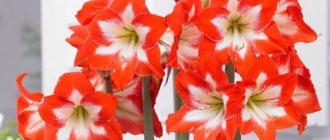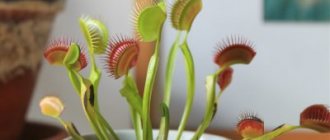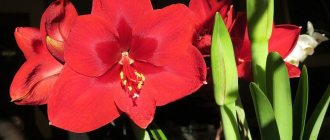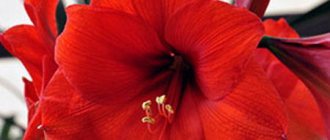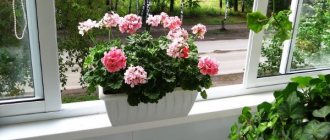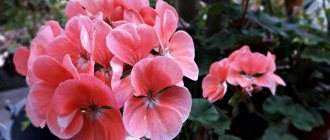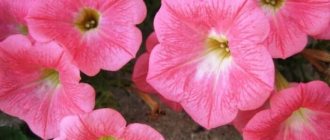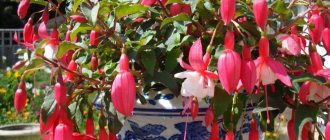Amaryllis is a large family of monocots, including about two thousand varieties. The main part of them are herbaceous types of flowers. They have an aesthetic appearance, for which they are very fond of flower growers in European countries. In addition to decorative purposes, some plant species are used in medicine and cooking.
In this article we will look at the amaryllis family, photos and the main features of its representatives.
Homeland of the family
Amaryllis is native to South Africa. In this part of the hottest continent, nature comes to life only for a couple of months a year. This period occurs in July and August. It is at this time that the arid southern part of Africa receives abundant rain. The soil is saturated with moisture, and the bulbs of the plant of the amaryllis family acquire buds.
It is remarkable that in such a short time the desert terrain of South Africa is being transformed. The landscape is covered with a colorful carpet of all kinds of flowers and grasses. Among this abundance of vegetation, large flowers stand out. On a massive thick stem, which can reach 60 centimeters in height, there are inflorescences formed from buds of various colors. A flower of the amaryllis family can have a different shape and shade depending on what species it belongs to. It can be white, burgundy, or pink.
Popular varieties
Breeding developments in relation to amaryllis pursue three goals.
- The first of these is the creation of larger flowers with more petals. The flowering of such varieties amazes with its splendor!
- The second direction of selection is based on creating a flower with unusual petal colors.
- The third goal is to create plants whose flowers differ from their parent specimens in the unusual shape of their petals.
The following varieties of amaryllis are recognized as the most popular for growing at home:
| Variety name | Description |
| Durban | Large-flowered variety with bell-shaped flowers. The color of the petals is carmine red with a white spot at the base of the petals. |
| Parker | A variety with deep pink flowers typical of amaryllis in shape and size. At the base of each petal there is a yellow spot |
| Ice Queen | Large-flowered amaryllis with white petals with a slight cream coating along the edges of the petals. The flowers are especially beautiful due to the dense gloss on the petals, due to which they reflect glare of light, creating the impression of shimmering. |
| Vera (Vera) | The flowers are medium-sized and light pink. A distinctive feature of this variety is a pearlescent coating on the petals. |
| Red Lion | Very beautiful and large flower of deep red color |
| Kyussky | Late-flowering variety with dark pink petals covered at the base with a yellowish bloom |
| Grandeur | A very beautiful variety with narrow petals painted pink. In this case, the color of the flower as a whole represents a gradient transition from lighter shades on some petals to brighter shades on others. The throat of the flowers is yellowish-green |
| Nymph (Nymph) | Large-flowered double amaryllis with white petals, colored with bright pink strokes |
| Macarena | Bright red, densely double flower with white longitudinal stripes in the center of the outer petals |
| La Paz | A very unusual variety with very narrow petals, painted green with a red coating along the edge of the petal. Externally, the flowers of this variety resemble lilies |
general description
The Amaryllidaceae family includes about seventy genera of bulbous plants. It is interesting that, although the historical homeland of this culture is South Africa, this did not prevent it from spreading widely to all continents. Some members of the amaryllis family are found even in temperate climates. These include daffodils and snowdrops. However, most species of the amaryllis family grow in tropical and subtropical zones.
Most heat-loving species can be grown in apartment conditions. These include hippeastrum, clivia, vorsleya and rhodophiala. The main reason for the fame of the amaryllis family lies in their unusual inflorescences. They have a very aesthetic and beautiful appearance, thanks to which they can fit into any interior. Buds can be collected in several pieces. There are also plants with single flowers.
Amaryllis grows in the southern part of the African continent. An interesting fact is that gardeners often mistake it for another plant - hippeastrum. This crop is very similar in appearance to the amaryllis family, but grows on the American continent. This caused some confusion, and therefore the International Botanical Congress put forward certain recommendations in the mid-20th century.
- All amaryllis found in South Africa can be combined into one species - beautiful amaryllis.
- All subspecies growing on the American continent are classified as hippeastrum.
However, for many years, clivias and many other bulbous flowers were also called amaryllis. Therefore, to this day, often in descriptions of the characteristics of the amaryllis family one can see the name hippeastrum as a synonym for this type of plant.
Appearance of leaves
Many people who see amaryllis for the first time may think that this plant lacks foliage. But it still exists. The leaves of members of the amaryllis family are long and grooved in shape. Their color varies from light green to deep dark. The bush has a peculiar structure. Leaves grow from the root, not from the petioles. This culture does not have them. One of its main features is the death of leaves during the dormant period. This can only be observed in hybrid types. If we consider other species, their foliage remains all year round.
What does amaryllis look like?
Amaryllis is a typical bulbous crop, the underground part of which is represented by a rounded formation with a narrowing in the upper part, consisting of many thin scales, that is, an ordinary bulb with a diameter of up to 12 cm. The roots of the plant are located on its lower part, and are presented in the form of a fibrous root. Amaryllis leaves have a sword-shaped or linear shape with a point at the top.
The peduncle is a long bare stem growing from the center of the bulb, appearing shortly before the leaves grow. It is glabrous, smooth, covered with a dense skin and bears from 4 to 8 funnel-shaped flowers. Amaryllis flowers reach 5-8 cm in diameter and have 6 lance-shaped petals with a pointed outer edge. In nature, they are colored white or pink, and in cultivation many varieties have been bred with yellowish-pink, golden or purple petals. Red or brick-red amaryllis is a classic of the genre; they were the first to appear in culture.
What is a peduncle
Before the start of the most beautiful period, the arrow with buds is released. The size of the peduncle directly depends on the parameters of the bulb, in particular its age. Also important factors are the conditions under which amaryllis grows. If the bulb is sufficiently developed, the peduncle can reach a size of 55-60 centimeters. It has a dense, fleshy structure and is not hollow inside. During the growth period, the peduncle is always directed towards the light. In order for it to have the correct, even shape, the container with the plant is regularly rotated around its axis. The arrow is removed only after the seeds have completely ripened.
Some lovers of indoor plants immediately after the first bud opens, cut off the peduncle and place it in a container of water. It is noteworthy that the remaining flowers on it fully bloom and are capable of existing no less than on the plant. The shoot is cut off so that the bulb has the opportunity to produce a new one. However, using this method, it will not be possible to obtain amaryllis seeds.
What do all members of the family have in common?
Let's consider the main characteristics that are similar for many species included in the large amaryllis family:
- All plants have a bulb, which is their main part. This is where a full life begins. An adult tuber is pear-shaped and scales form on it. As it grows, it increases in size several times. Please note that in many representatives of this genus, children appear not from the sides of the mother plant, but from its center.
- Leaves. They are not always present in the plant, because during the dormant period the crop sheds them. The blades grow from the center of the bulb, are grooved in shape, and come in different shades of green, depending on the variety.
- Bloom. Before flowering begins, the plant throws out an arrow with a bud. The size of the peduncle is diametrical to the size of the bulb, but old plants may refuse to bloom altogether.
@ Sparkmedia stock.adobe.com Clivia with yellow flowers is rare in indoor gardening.
Attention! The bulb is capable of producing several flower shoots during the growing season, but it needs some help. After the first bud blooms on the arrow, cut it off and place it in water. In this way, the bulb will not waste nutrients on maintaining the peduncle and will be able to produce another one. The cut arrow will fully bloom and will remain in water for at least 2 weeks.
Hippeastrum
Hippeastrum is the brightest and most common representative of amaryllis in indoor floriculture. It grows naturally in mountainous areas of Mexico, Central and South America. An interesting fact is that there is confusion with the names of plants, which is why many gardeners call hippeastrum amaryllis. This is only incorrect from a botanical point of view, since the two genera were recently separated.
@ Qyzz stock.adobe.com White hippeastrum
In closed ground conditions, only hippeastrums are able to grow, bloom and fully develop. Amaryllis is not able to grow indoors. Hippeastrum is valued for its bright flowering; the buds can be monochromatic or multi-colored. The leaves are long, reaching 1 meter, belt-shaped. When growing a plant, it is necessary to ensure the growth of the bulb. The plant must grow separately, the bulbs must be separated in a timely manner, otherwise flowering may not be expected. The longest, brightest and most abundant flowering will be on an adult bulb with a size of more than 10 cm.
Recommended culture conditions are discussed in the following table.
| Basic recommendations for caring for hippeastrum | |
| Temperature | Should be between 20 and 25 degrees. |
| Humidity | About 50%, in standard apartments additional humidification is not required. |
| Lighting | Bright diffused color, the plant will not bloom in the shade. |
| Watering | Plentiful when the peduncle appears, it is stopped in September, thus preparing the plant for the dormant period. |
| Feeding | Conducted during the period of active growth after the appearance of the flower arrow until the onset of autumn. |
| Transfer | It is carried out a month after the end of flowering. |
| Reproduction | Seeds and babies. |
After flowering has completed, the plant prepares for a period of dormancy. It must be provided from October and end with increasing daylight hours, in January-February, depending on the region. If the plant does not rest, the next flowering will not occur or will be scanty.
How to get hippeastrum to bloom at home? Useful tips in the next video.
Clivia
This is a beautifully flowering plant, which in its natural habitat is distributed in the subtropics of South America. In countries with temperate climates it is grown only as a pot crop, on windowsills. The plant develops at an average speed and, with proper care, produces up to 8 leaves per year. Cast with a fairly long life span - about 40 years. Flowering begins in February, the plant produces a peduncle on which buds bloom within a month.
@ lizaveta25 stock.adobe.com Clivia flowers last for more than a month after blooming
| Basic recommendations for growing clivia at home | |
| Temperature | In summer the temperature ranges from 20 to 25 degrees, in winter a drop to 12-15 is acceptable. |
| Air humidity | It tolerates dry air well; it is recommended to wipe the leaves of the plant with a damp cloth once a week. |
| Watering | Provided once a week, the plant does not tolerate waterlogging of the soil. |
| Lighting | Bright diffused light is required, optimally placed on window sills with an eastern orientation. |
| Fertilizer | From spring to the end of summer, liquid mineral fertilizer for flowering plants is applied to the soil once every 2 weeks. |
| Transfer | I replant young plants annually, and the top layer of soil is changed for adults. |
| Reproduction | Radical shoots. |
Attention! The peduncle should be trimmed immediately after the start of wilting. The seeds should not be allowed to ripen. They have low germination, and an adult plant may not please the owner with flowering next season.
Why does the beautiful clivia not bloom and how to solve this problem? The answer to the question is in the next video.
Zephyranthes
Zephyranthes, which is also called “upstart” among gardeners, also belongs to the amaryllis family. Under natural conditions it grows on a cube. It does not have any special maintenance requirements, blooms readily, and is suitable for beginner gardeners. The leaves reach 40 cm in length. The plant is perennial, flowering in spring and summer. is of sufficient duration. The flowers are white, pink or yellow and last only a few days.
@ exsodus stock.adobe.com It has special maintenance requirements and requires a cool winter for full flowering
| Basic recommendations for caring for marshmallows | |
| Temperature | In summer - no more than 27 degrees. During the rest period, a decrease to 10-12 is acceptable. |
| Humidity | Medium, it is recommended to periodically moisten the air around the plant. |
| Lighting | Bright, can be placed on eastern and southern window sills. With a lack of sunlight, the bulbs stop blooming. |
| Watering | During the period of active growth - once every 3-6 months. In winter it is limited or stopped altogether. |
| Top dressing | Provided with liquid fertilizer once every 2 weeks. |
| Transfer | Held annually. |
| Reproduction | By dividing the bulbs and using the seed method. |
Remember that during the dormant period, zephyranthes can also shed leaves. This is especially true for varieties with pink flowers. The white “upstart” has a less pronounced dormant period, so the plant can remain green.
Krinum
@ dextorth stock.adobe.com Crinum is difficult to grow at home; most often the flower can be found in greenhouses
Crinum is a rare but very beautiful plant belonging to the amaryllis family. It grows naturally in tropical and subtropical areas of South America. It prefers moist soil, so it can be found near the shores of water bodies. It is valued for its beautiful flowering; inflorescences are formed on the arrow - umbrellas; the petals are painted white or pink.
Attention! Translated from Latin, the name of the plant means “hair”; the name is associated with the structural features of the leaves.
| Features of growing crinum at home | |
| Temperature | In summer – 22-27 degrees, in winter – at least 12. |
| Humidity | Increased, for hygienic purposes it is recommended to wipe the leaves at least once a week. |
| Refreshment | He is very picky about this indicator. The light should be bright; to obtain flowering in indoor conditions, daylight hours should last at least 16 hours. |
| Watering | It is provided after the top layer of soil has dried; radical drying is not allowed. |
| Feeding | Provided from the end of February to the end of September with liquid mineral fertilizer once every 2 weeks. |
| Transfer | Held in February. During the procedure, it is necessary to remove the existing children; they can be placed in separate cups. |
| Reproduction | It is provided by bulbs during the formation of daughter shoots or by seed. |
Determining all the subtleties and nuances of growing crinum at home is quite difficult. The plant is poorly distributed in Russia.
Sprekelia
@ jordon stock.adobe.com In summer, it is useful to plant sprekelia in open ground
Sprekelia or sprekelia is an elegant bulbous plant, available in two types. Valuable bulbs were brought to Europe relatively recently, in 1950. Mexico is considered the birthplace of the plant. Flowering occurs in late spring or early summer. After its completion, a period of rest begins, which is not expressed. The plant is evergreen, its leaves do not fade, but their growth stops. The lifespan in indoor conditions is no more than 5-6 years, so it’s worth worrying about raising replacement babies in advance.
| Basic recommendations for growing sprekelia at home | |
| Temperature | Kept at temperatures from 20 to 22 degrees, cool wintering is required. |
| Humidity | Increased, at least 50%. |
| Lighting | Bright sunlight, direct sunlight is necessary for bulb development. |
| Watering | During the period of active growth - abundant, provided 1-2 times a week. In winter it should be reduced. |
| Top dressing | It is carried out 2 times a month with mineral fertilizer for flowering plants. |
| Reproduction | Daughter bulbs. |
| Transfer | It is carried out once every 2 years, the bulb is buried in the soil no more than 2/3. |
The peduncle appears in the warm and sunny season, but the buds themselves react poorly to high temperatures and retain their freshness less well, so at this time the flowerpot should be protected from direct sunlight.
Eucharis
@ Anzhela stock.adobe.com Eucharis flowers look like daffodils
This plant takes pride of place among all ornamental flowering plants. It is valued not only for its flowering, but also for its aroma. It is also popularly called the Amazon lily. Eucharis flowers are similar in structure to narcissus, but they are much larger and are formed several times a year. The peduncle is long, reaches half a meter in height. The leaves are wide with a corrugated surface.
| How to care for eucharis at home | |
| Temperature | Up to 28 degrees in summer, at least 13 in winter. |
| Air humidity | Increased, within 50-70%. |
| Lighting | Bright diffused light is recommended to be placed on eastern and western window sills. |
| Watering | In summer it is abundant, and in winter it is scarce, as the soil dries completely. |
| Reproduction | Seeds and division of bulbs. |
| Top dressing | It is carried out once every 2 weeks from spring to autumn. |
| Transfer | Young specimens - annually, adults - once every 3 years. |
The following video will show you how to properly care for the Amazon lily at home:
Advice! After a stable temperature outside in the spring (above 12 degrees at night), the plant should be planted in the garden. There its flowering will be lush and abundant. In the fall, the plant is treated for pests and brought into the house.
Vallota
This is a beautifully flowering bulbous plant, the inflorescences of which are somewhat similar to simple bells, but they have a rich, bright color and are located on a high peduncle. The culture develops quickly, but does not exceed 50 cm in height. It grows actively in indoor conditions and readily produces babies. It is interesting to know that the name of the culture is given in honor of the French botanist who first discovered the plant - Pierre Vallot.
@ enyushkin stock.adobe.com Wallota is often called an ordinary indoor lily
| How to care for wallot at home | |
| Temperature | No more than 28 degrees in summer. A cool winter is required at a temperature of about 12 degrees. |
| Humidity | Standard. Spraying is allowed in summer. |
| Lighting | In summer – diffused, in winter – bright light. |
| Watering | As the soil dries out, the bulb does not tolerate waterlogging. |
| Feeding | In spring and summer - 2 times a month, in autumn - 1 time a month. In winter, no additional food is required. |
| Transfer | It is carried out in the spring, once every 2 years. |
| Reproduction | Children and seeds. |
The plant does not shed its leaves for the winter, so it must be cared for year-round. The main thing is not to overfill the wallot, otherwise it may rot. Remember that yellowing of the leaves is the first symptom. The plant needs to be pulled out of the pot, the bulb and root should be examined. If there is rot, it should be cleaned and treated with a fungicide.
Seeds of the amaryllis family, general characteristics
After the flower petals fall, boxes are formed in their place, in which the seeds are located. They initially have a rich green color and are triangular in shape. They consist of 3 chambers, where the process of seed ripening occurs. This period lasts at least 1 month. Each chamber contains up to 18-20 seeds. Their color varies from white to pale red. For this, gardeners often compare them to pomegranate seeds. Amaryllis seeds become unusable very quickly, so it is recommended not to delay planting them after collection.
Flower
It is large in size and can reach 10 centimeters in diameter. The flowers form umbrella-shaped inflorescences. Each of them can have up to 10-12 buds. In the wild, growing in South Africa, amaryllis can often have a simple shape, with 6 petals forming a funnel. At the same time, breeders every year breed more and more new hybrid species of this plant, where you can see flowers of various sizes with a rich palette of colors.
Cultivated amaryllis and their hybrids
The belladonna species was domesticated in the early 1700s. Amaryllis bulbs were exported to England, then to the south of Australia and to America. It was in Australia, at the beginning of the 19th century, that hybrid plants were first obtained. Today it is no longer possible to know their nature, but they have become the basis for obtaining amaryllis, the colors of which differ from natural ones.
Flower growers have at their disposal plants that reveal corollas of purple, peach, almost red and even completely white shades.
The white amaryllis in the photo, unlike the pink varieties, have completely green stems and do not have a bluish or purple tint. Modern breeders have produced plants with corollas that are decorated with stripes and veins, which have beautifully darkened edges or have light yellow centers. Unlike wild amaryllis, cultivated varieties often form a hemispherical inflorescence.
The species Amaryllis belladonna has already been used in our time for crossing with Muray crinum. The resulting hybrid species was named Amarcrinum. And today the plant produces amazingly beautiful and diverse varieties.
Another amaryllis hybrid was obtained by crossing with Brunswigia Josephine. It was called Amarygia.
How to plant and propagate
This plant with spreading leaves and a high peduncle has insufficient resistance. Therefore, experts recommend using large containers during replanting. An important point when choosing a pot for amaryllis is its special shape. The container should be narrowed at the top and widen at the bottom. This will provide the necessary stability to the pot. When planting, certain requirements must be observed.
First, the bulb should be planted in the center. In this case, the distance from it to the walls of the pot should be at least three centimeters. If several bulbs are placed in a container, then a gap of at least 10 centimeters should be left between them. The second important condition is the volume of the pot. It should be wide and deep. This is necessary since the plant has a powerful root system.
When planting, it is recommended to use soil containing river sand, garden soil and turf soil. You can create this mixture yourself or purchase it at a specialty store. Drainage plays a key role when planting. It is able to provide the necessary aeration of the roots. You can use gravel or expanded clay as drainage. It is poured in a layer of no more than three centimeters; you need to add a little sand on top.
Care
With proper care, you can get up to three amaryllis blooms per year. This crop needs indirect light, moderate moisture, adequate soil drainage, comfortable room temperature and proper fertilization. Watering should begin no earlier than the boom rises to a height of ten centimeters. It is important to know that amaryllis do not like stagnant water. In this case, it is optimal to water no more than once every four days. It should be done so that water does not get on the bulbs. It should be poured exclusively into the soil.
In the winter months, you need to spray the crop, but not more than once every ten days. As fertilizers, flower growers recommend using mixtures saturated with phosphorus and potassium. If we are talking about amaryllis growing in open ground, then they can be fed with organic matter. The solution can be prepared from poultry droppings.
Reproduction
The plant reproduces in 3 ways:
- Daughter bulbs. Flowering with this method can begin 3 years after separation.
- By dividing a large onion. To make the formation proceed faster between the lobules, it is recommended to insert knitting needles along the incisions.
- Seeds. Seedlings begin within a month, and flowering occurs only 7 years after propagation.
To propagate a flower, it is important to know which method to choose and how to plant seeds or bulbs correctly.
Video about methods of propagating amaryllis:
You will learn more about reproduction and cultivation from this article.
Diseases and pests
The most dangerous and destructive disease for amaryllis is stagonosporosis. When a disease affects a crop, spots form on the bushes, which become increasingly larger over time. This leads to the death of foliage. As a result, the bulb will also certainly die. Without the required number of leaves, it gradually becomes smaller and weaker. In order to cure a plant, as a rule, a 0.2% solution of Fundazol is used. Trichodermin or Fitosporin are also perfect. The treatment process itself lasts for two years and consists of treating the bulb before planting it, spraying the foliage and soil.
The most dangerous pests of amaryllis are: scale insects, scale insects, root mites, nematodes, slugs, mealybugs, narcissus fly and others. Florists recommend paying close attention to temperature conditions. The greatest activity and reproduction of pests occurs at high temperatures. Therefore, it is important to periodically inspect the crop for unwanted insects. On the lower and upper sides of the leaves you can find a scale insect protected by a waxy shell. But the greatest damage to the plant is caused by vagrants that spread through the foliage and suck the juice from it.
Possible problems during cultivation
Indoor amaryllis is a very undemanding plant, which can still sadden its owner with some problems. When solving them, it is necessary to find out the source of the changes that have occurred, and only then begin to restore the flower.
| Problem | Reason for change | How to solve a problem |
| Leaves become pale | Excessive sun exposure | Move the flower away from direct sunlight |
| Leaves become dark or turn black | Excessive dampness and lack of heat | Reduce watering and place the pot with the plant in a warmer room |
| Wilting of peduncle and leaves | Acute lack of moisture | Water a flower through a tray |
| The leaves suddenly turn yellow and wither | Pest damage | Check the plant for specific pests and carry out treatment (see the corresponding section) |
| The plant does not bloom | Lack of sufficient rest period, light, heat, nutrients in the soil, damage to the bulb by pests or diseases | Planting a plant in fresh soil, placing it in favorable conditions, treating it with drugs against pests and diseases |
Important! Sometimes a gardener is perplexed why his flower does not bloom, although the leaves grow normally and care is carried out in full accordance with the requirements. Before disturbing the plant with transplants, you need to remember how old the amaryllis bulb is - until the age of three, this crop does not begin to bloom!

